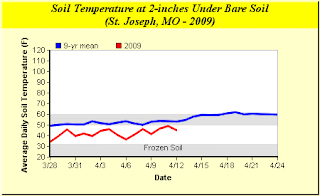ASPARAGUS (F/P) We have enough for all this week thanks to the warmer temperatures. (Check out fellow FSF CSA members delectable asparagus recipes on our blog roll)
BOK CHOI (F/P) The downpour last week sent them into a premature flower, but they have kept their sweetness.
GREEN GARLIC (F) Add to your stir fries, salads & pastas.
GREEN ONIONS (F/P) The first young babies of the onion harvest.
MINT (F) In abundance this time of year. Read Tom’s post for a short tract on its healing and culinary properties
HERB CHOICE (F/P) Cilantro or dill
Also this week: Parker Farms delivery
Weather: Last week we fared better than many and only received 2.7 inches of rain and a bit of pea-sized hail followed quickly by a low of 39 degrees. Our spring plantings of radishes, arugula and Hakurei turnips are not enjoying the multiple downpours and their harvests are in doubt. Ahead of the frosty forecast we were able with a big help from the membership on Weds and Sat to mulch all of the tomatoes. They seemed to have survived just fine, but some of our peppers got a bit nipped. We think most will recover and we have some replacements for those that don’t. Thanks to the Saturday crew especially who braved a suprisingly bitter wind during harvest and then mulched 800 row feet of tomatoes.
The Fields: Our planting season is winding down with just a bit left until we gear up for the fall crops in June. Until then we are focused on tending to the crops in the field: laying irrigation tape, protecting the crops from pests with row cover, staking, caging and mulching. The greenhouse has morphed into its summer form as an herb-drying house. We turned off the fan and filled it with crates of drying herbs, making it quite the herbal sauna inside.


















